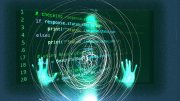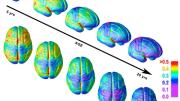Assistant professor of Anthropology and archaeologist Jason Ur talks about the ancient city of Tell Brak in northeastern Syria. He explains how thousands of years of mud architecture can create a mountain, what trash tells us about where people lived, and how even the ugliest pottery can be lovely to the archaeologist. The May-June issue reports on Jason Ur's work in "Outside-In Ur-banism."
Interact with an embedded Google map below. The Jaghjagh river, a tributary of the Euphrates, flows from right to left along the bottom of the map. Tell Brak is located in the upper left-hand corner next to the navigation arrows. Double-click on the mound to zoom in on Tell Brak.








